Steemit Crypto Academy | Season 3: Week 1 || Staking || Homework post for @imagen
Homework Task.
1.) Research and choose 2 platforms where you can do Staking, explain them, compare them and indicate which one is more profitable according to your opinion. (Binace is not allowed)
2.) What is Impermanent Loss?
3.) What is Delegated Proof of Stake (DPoS)?
4.) Conclusion

This is my assignment post from the work of professor @imagen
Before I go into the questions, I will like to first explain staking cryptocurrency:
Staking coins is a process where a number of tokens are purchased and set aside to become a network validating node.. The purchaser becomes a significant part of the network safety infrastructure and is compensated proportionally by merely retaining these coins.
Interest is provided to the stakeholder as a type of staking income, and rates vary from one network to the next depending on a variety of factors such as supply and demand dynamics.
Group staking: as staking pools, staking providers, and cold staking, has emerged as a new method to stake crypto as the number of PoS-based networks continues to grow.

1.) Research and choose 2 platforms where you can do Staking, explain them, compare them and indicate which one is more profitable according to your opinion.
My research on this question will be based on Trust wallet and Atomic wallet. I will be showing my research on the two platform. I will use Tron (trx) as an example.
Staking on Trust wallet
Trust wallet is a digital cryptocurrency wallet where you can store your coin. I will therefore explain how to stake on Trust wallet using Tron (trx) as an example.
- The first thing is to open the trust wallet and select the coin you want to stake. In this case Tron (trx)
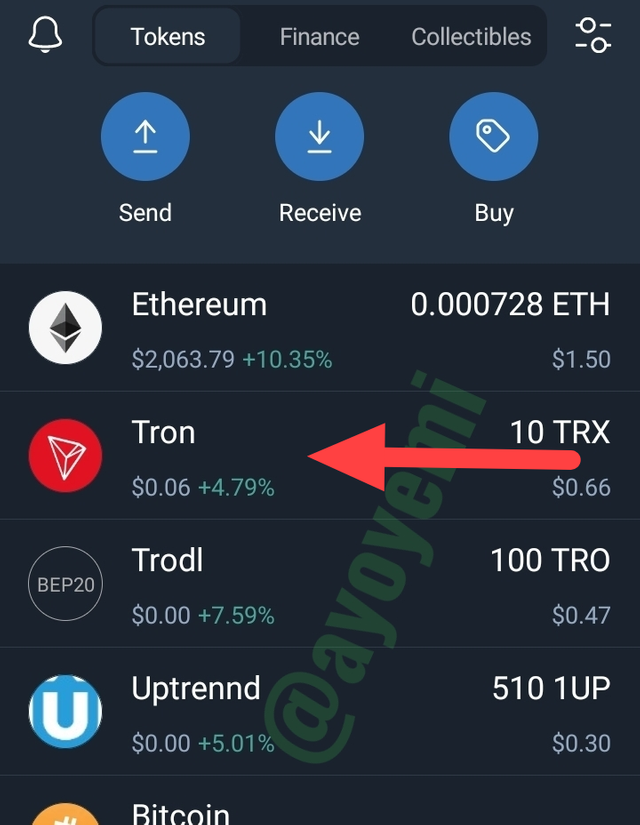
- Then the Tron page will come up as shown below and you will click on the menu where you will see the stake Icon.
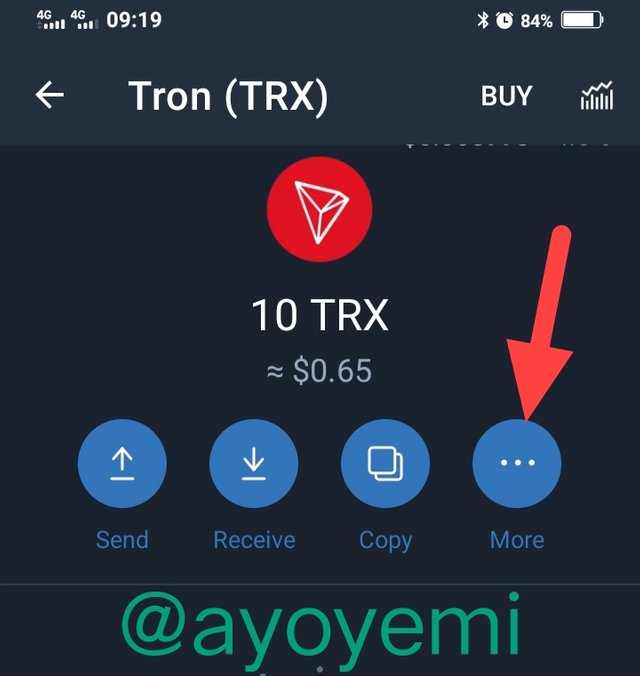
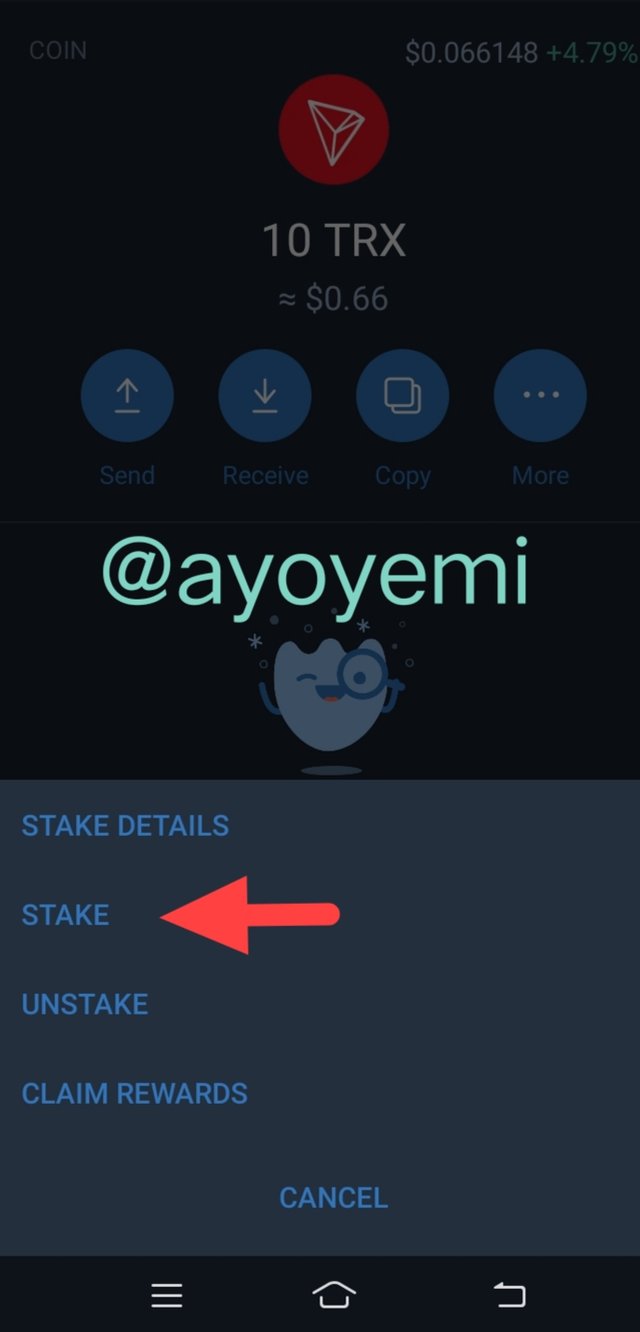
- Click on stake and then you will be taken to where you will fill the number of coin you are staking as show below. Then the APR (Annual percentage rate) is 0.74%
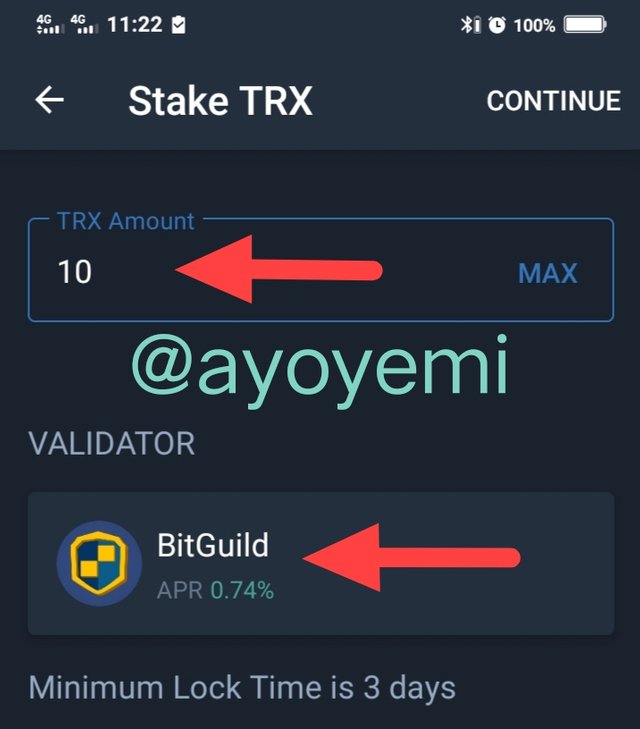
- After you have fill the form, you click continue and the transaction will be shown as below, then you will press send.
Staking with Atomic wallet
This is another type of decentralized cryptocurrency mobile wallet, where staking and others activities can be done.
How to stake on Atomic wallet
- The first thing is to open Atomic wallet from your device and click on staking. You will then type/search for the coin you are staking. In this case Tron (trx) as shown below
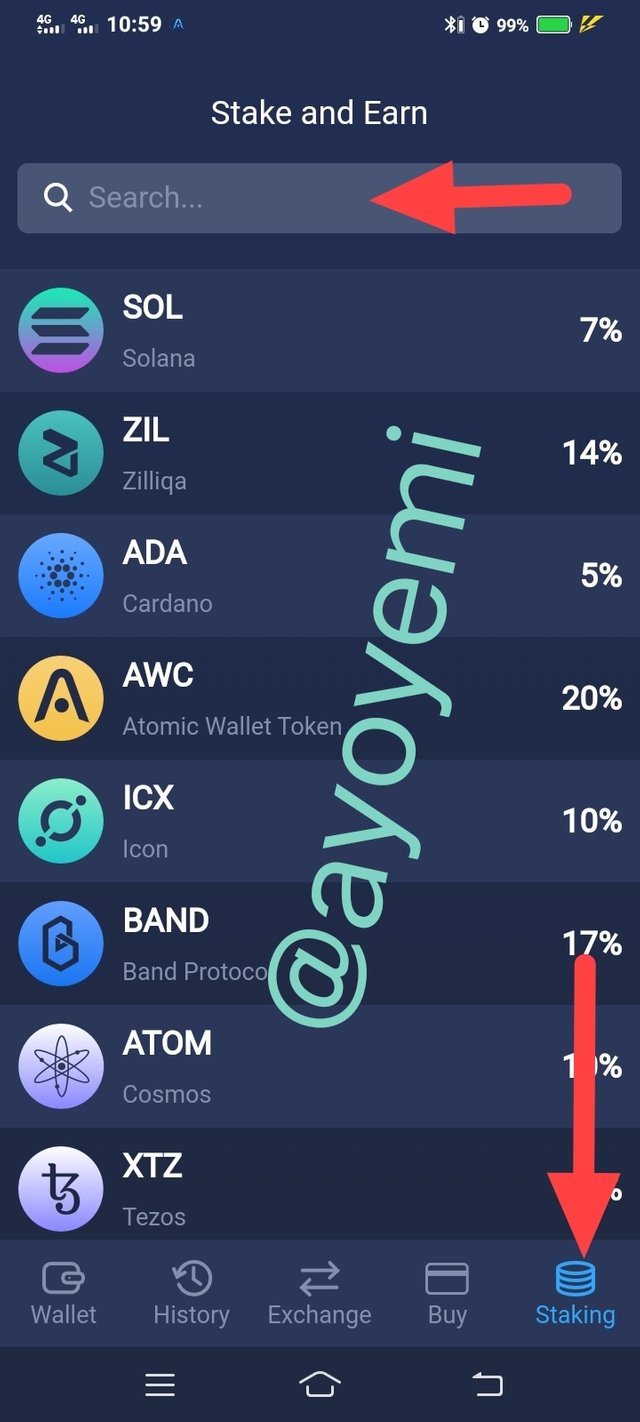
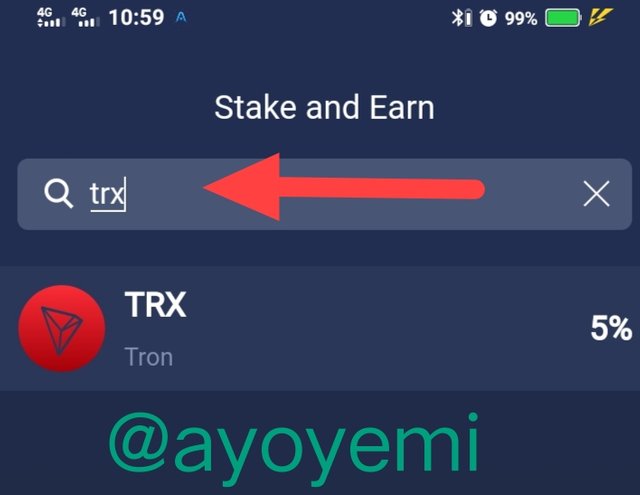
- Then you will be taken to where to input the number of coin you are staking. In this case 100 trx.
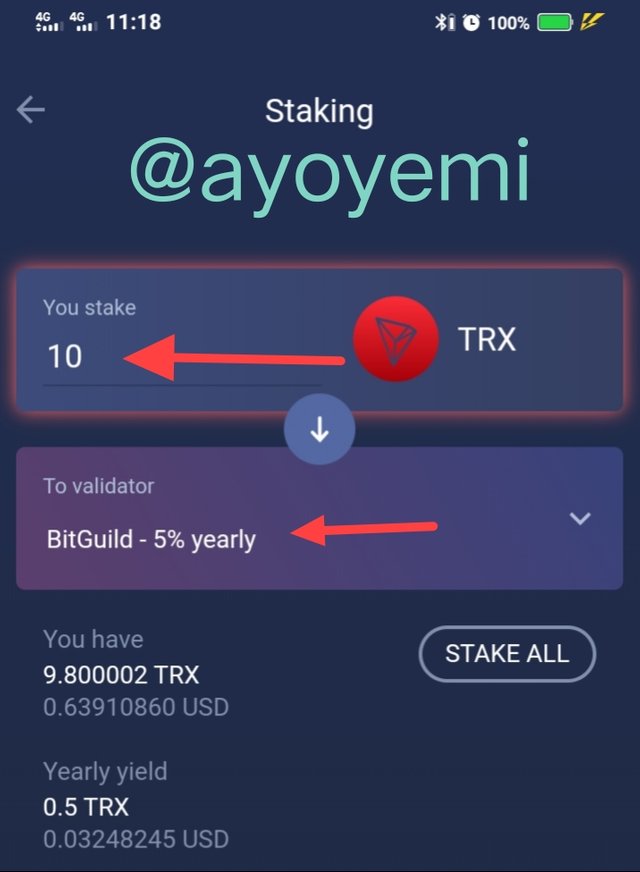
- And finally you will click on stake to validate your staking.
Comparing the two platform
Atomic is both desktop and mobile wallet while trust wallet is mobile wallet only.
Bitguild is used as the validator for the two stakings but the APR in the case of trust wallet is 0.74% for the 10 trx which will be = 0.074 per year.
While on Atomic wallet, The yearly return is 5% which will be 5% of 10 trx = 0.5 trx per year.
Which one is more profitable?
From what I calculated below, it will be best to stake with Atomic wallet, considering the yearly return on the two platforms.

2.) What is Impermanent Loss?
Impermanent loss is the difference between owning two assets and pooling them. The name comes from the fact that the loss is not realized until the stake is removed.
This is the difference that occur in value between funds in an AMM and funds held in your wallet. When the value of the cash staked in the AMM swings dramatically, it is called impermanent loss.
The bigger the price changes, the greater the chance of a temporary loss.
Because of the volatility in a trading pair, these price swings essentially result in a temporary loss of capital.
It is possible to recover impermanent loss if the tokens' initial price in the AMM returns to the same level as when you first entered the AMM. The loss will vanish, and you will be able to recoup 100% of your trading fees. Although this is an exceedingly unusual occurrence, most of the time these losses become permanent, consuming all of your trading profits and leaving you with just negative returns.

3.) What is Delegated Proof of Stake (DPoS)?
Delegated Proof of Stake (DPoS) is a popular variant of the Proof of Stake (PoS) idea, in which network users vote and elect delegates to validate the next block. Witnesses and block producers are other terms for delegates. You can vote on delegates using DPoS by putting your tokens into a staking pool and attaching them to a specific delegate. Instead than directly transferring your tokens to another wallet, you stake them in a staking pool through a staking service provider. The DPOS, unlike the earlier POW and POS consent systems, has a voting method in which each vote is equal to one frozen token.
Example of Blockchain that uses DPOs are Bitshare, EOS and Tron. They are highly scalable because they make use of DPOS as a consensus alogarithm.
Users that pooled their tokens in the successful delegate's pool are rewarded with the transaction fees from the verified block, which are subsequently shared with elected delegates. You will receive a larger portion of the block reward if you stake more. The prizes are distributed based on the amount of money invested by each user.

Conclusion
Staking allows users to contribute to the network's security. As a result, users receive native tokens as compensation for securing the network.
The more crypto-assets you pledge, the better your rewards will be. The incentives are delivered on-chain, which implies that earning them is a completely automated procedure. Stake them is all that's required. As a result, your crypto-assets will grow even while you sleep!Impermanent losses describe the temporary loss of funds that liquidity suppliers have occasionally experienced due to trading volatility. This also shows that someone would have had more money if they just kept on their assets rather than providing liquidity.
Delegated Proof of Stake(DPOS) came to address blockchain technology's scalability issues. In comparison to Proof of Work(PoW), it nevertheless maintains a high level of security and robustness .


Hello @ayoyemi, thank you for participating in the Steemit Crypto Academy. You made a good effort, however, I need to explain in greater depth the characteristics of the 2 platforms that you selected for this assignment.
I look forward to continuing to correct your next assignments.
Homework tasK: 7.0